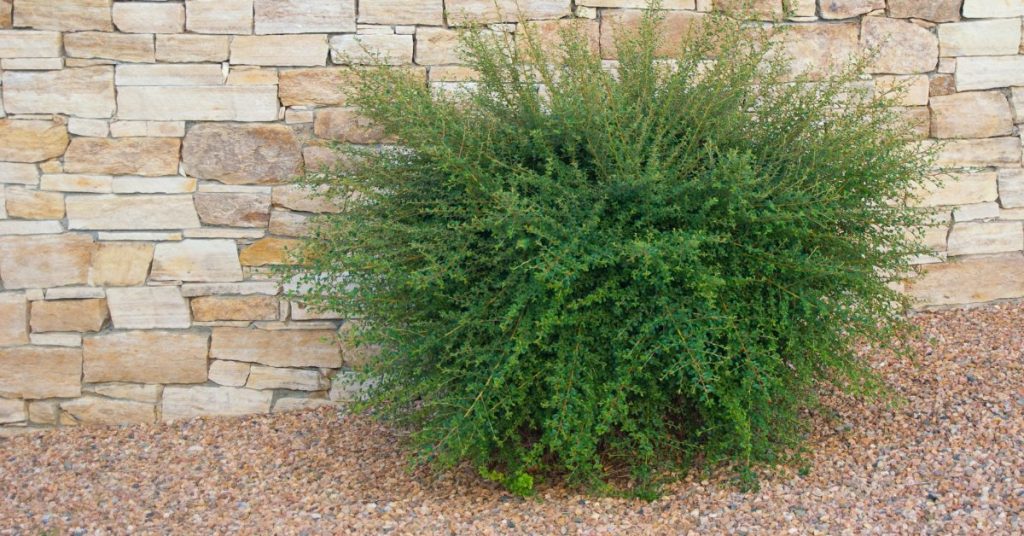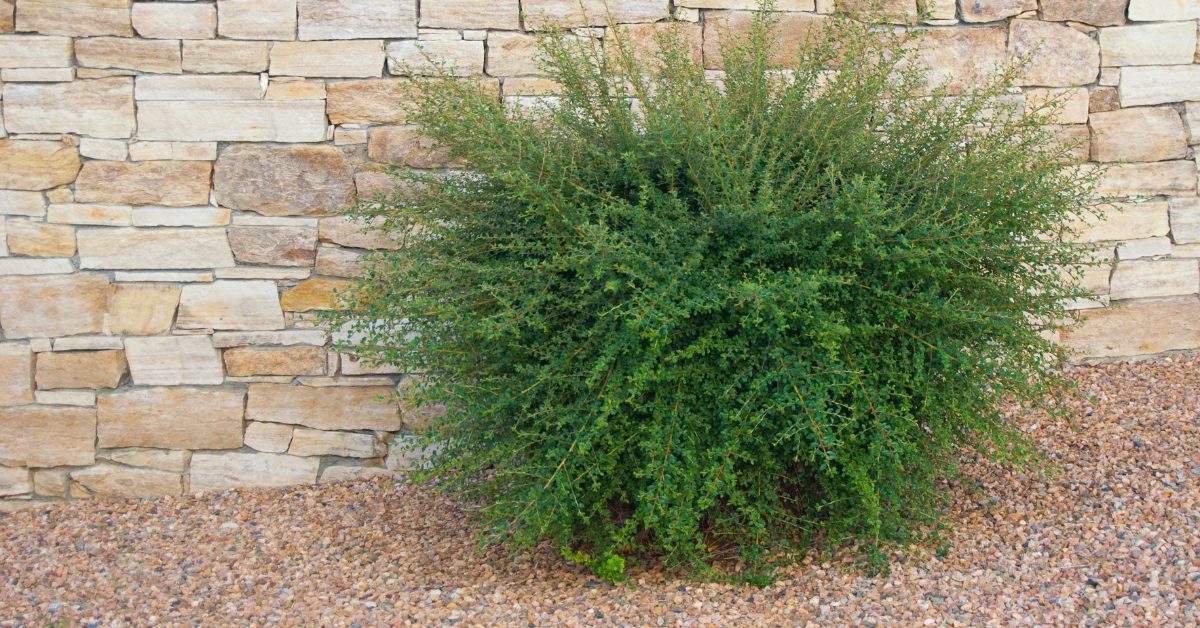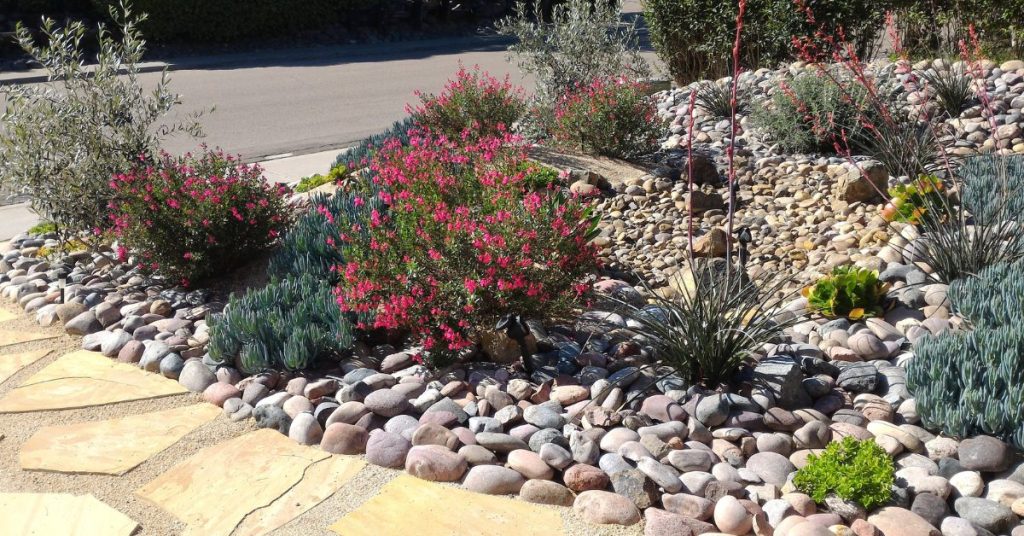Step into the world of xeriscape gardens, a landscaping approach designed for dry conditions. Derived from the Greek word “xeros,” meaning dry, xeriscaping is all about creating beautiful gardens that use less water.
Let’s explore this versatile solution for its practicality, water conservation and environmental benefits.
Is Xeriscape Gardens Meant for Arid Regions Only?
No! Adapt it to make the best of your environment.
Native plants are the best choice for xeriscaping, as they have adapted to the conditions of their region, such as rainfall and soil types. This means that you can try this water saving approach wherever you are.
And by saving water, we mean that there is no extra irrigation needed. Design your garden based on the weather patterns, and use rainwater solutions where nececsary.

6 Benefits of Embracing Xeriscape Gardens
What are the benefits of creating a xeriscape garden?
1. It Saves Precious Water
It’s all about water conservation! The concept revolves around using plants that can survive with little or no irrigation. This is especially helpful in dry areas or during water shortages.
2. It Protects Our Environment
Xeriscaping reduces the need for chemicals. That means less fertilizers and pesticides, that pollute the water and soil. And what is more, it reduces the amount of waste, such as yard trimmings, that end up in landfills.
3. It Promotes Biodiversity
A successful water-wise garden uses native plants. They have already adapted to the local climate and soil. So they provide food and shelter for local wildlife, such as birds, butterflies, and bees.
And then there are personal benefits too
4. It Saves Your Time and Money
Get used to lower water bills. You may even save money on plants, as local products are often cheaper than traditional ones.
Xeriscaping requires less upkeep, such as watering, mowing, and fertilizing. You can spend more time enjoying your garden, rather than working on it.
5. You May Even Earn…
Some regions offer rewards for xeriscaping, such as rebates, tax credits, or grants. This can make xeriscaping even more affordable and attractive.
6. It is Simply Gorgeous
And let’s face it, these gardens are stunning and diverse landscapes. By using plants, rocks, and other features, you add color, texture, and beauty to your outdoor space.
How to Start a Xeriscape Garden in 7 Easy Steps
Although this is a lower maintenance form of gardening, it does require some initial effort and investment. You need to plan, design, and install your idea. Once established, your xeriscape garden will be low-maintenance and water-efficient, and will reward you with a beautiful and sustainable landscape.
1. Have Fun Planning
Assess your yard, considering its topography, exposure, and soil. Group plants by their water needs and create planting zones accordingly. (Don’t know how to do this? See the next step!)
Group plants as follows:
- Low-water zone for plants that need little or no supplemental irrigation
- Create a moderate-water zone for plants that need occasional watering.
- Add a high-water zone for plants that need regular watering
Remember to add hardscape elements, such as rocks, gravel, or pavers, to create pathways, borders, or focal points. Sketch out your design on paper or use a software tool to visualize your xeriscape garden.
2. Choose Native Plants
Plants that are native or adapted to your region will be more resilient and require less water and care. Group tough, drought-tolerant plants in sunny areas and give less tolerant plants some shade.
Here’s how to pick the perfect plants to bring your garden to life!
- Use native plant finders like the National Wildlife Federation, and search for native plants by zip code or region.
- Speak to experts at local nurseries or garden centers who can advise you on the best choices for your area.
- Native plant societies or organizations usually offer guides, workshops, or events on native plants and xeriscaping.
- Get inspiration by visiting native plant preserves or gardens that showcase the diversity and beauty of native plants.
Remember to ask questions about specific needs of the plant, such as sun exposure, preferred soil types, etc.
3. Improve Your Soil
Organic matter will help your soil retain moisture, improve drainage, and provide nutrients for your plants. You can even make your own!
Measure your soil pH with a test kit or pH meter. Add lime to increase pH or sulfur to decrease it.
4. Take Care of Irrigation
Xeriscaping conserves water, but plants still require some irrigation, especially during their initial planting. Water plants at the roots using drip irrigation or a soaker hose to save water from evaporation or runoff.
Try using timers, sensors, or smart controllers to automate your irrigation system. This will save you a lot of effort when you adjust it according to the weather and season. Or simply collect rainwater in barrels or cisterns to use for your xeriscape garden.
5. Add Turf Sparingly
Turf grass needs lots of water and maintenance. Use less or don’t use it at all in your xeriscape garden. Rather choose drought-resistant grasses, such as buffalo grass, blue grama, or bermuda grass.
These beautiful grasses can be used in practical or decorative ways. For example, they can be used in a playground or as a center of attention. You can make your lawn smaller by using other ground covers like clover, moss, or creeping thyme. These plants need less water and are easier to take care of.
6. Add your Mulch
Mulch helps retain soil moisture, suppress weeds, and moderate soil temperature. You can choose natural mulch like wood chips, bark, straw, or pine needles. Alternatively, you can go for man-made options such as gravel, pebbles, or crushed rock. The cool thing is that this forms part of the appearance you choose!
Apply a 2-4 inch layer of mulch around your plants, leaving some space around the stems or trunks to prevent rotting or pest infestation. Remember to replenish your mulch as needed.
7. And Yes, Some Periodic Maintenance is Needed
Xeriscaping reduces maintenance, but you still need to do some tasks to keep your garden healthy and beautiful.
Weed your garden frequently to prevent unwanted plants from competing with your desired plants for water and nutrients. Prune your plants as needed to remove dead or diseased branches, shape them, or encourage new growth.
Fertilize your plants sparingly and only when necessary, using organic or slow-release fertilizers. Water your plants deeply and infrequently, according to their water needs and the weather conditions.
Xeriscaping is more than just a gardening technique. It’s a lifestyle choice that reflects your values and vision for a better world.

Marzanne is our eco-enthusiast with an unwavering love for all things green! 🌱 As a self-proclaimed “green queen” and a DIY aficionado, her zeal for eco-conscious living shines through in every aspect of her life. ♻️
Join Marzanne as she shares her quirky, eco-infused adventures, offering tips, tricks, and a sprinkle of good-natured humor on integrating sustainable products, green design, and eco-friendly living into your home. She’s the green-spirited friend you never knew you were missing! 🌿🏡😄


